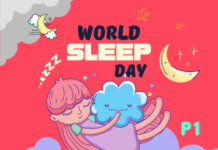A doctor went viral for making fun of someone’s birth plan. As someone who wrote one, I get why they matter.
- I wrote an elaborate birth plan when I was pregnant with my son 17 years ago.
- Almost two decades later, pregnant people are still doing this.
- I believe the issue is a lack of communication between providers and patients.

Giving birth can put people in a vulnerable state, both physically and emotionally. Add to that the fact that the US is in the midst of a worsening maternal-health crisis, and it’s no wonder that many people create birth plans to help their chances of having a complication-free birth.
Recently, on X (formerly known as Twitter) a doctor went viral for cruelly mocking a birth plan. The Massachusetts doctor shared a picture of someone’s handwritten birth plan, accompanied by his thoughts: “This baby might not make it out of the hospital.” This doctor’s dose of snark exemplifies exactly why birth plans are still popular.
I wrote an elaborate birth plan for myself
Seventeen years ago, when I was pregnant with my son, I wrote out a birth plan. I had heard stories of providers not listening to their patients, and a birth plan felt like a way I could have some sort of control over my experience.
Birth plans became popular in the late 1970s and ’80s as a pushback to the medicalization of labor and delivery that had started in the early 1900s (which included things like twilight labor and isolation), and they allowed patients to be a more active participant.
I wanted my son’s birth to be something I was a part of, not something that happened to me.
I read and researched and eventually came up with a birth plan that, in retrospect, was a bit over the top — did I really have to stipulate that I didn’t want maintenance staff coming in while I was in active labor?
But in the moment, it felt like a security blanket. It was printed out and encased in a white, three-ring binder, which was stuffed into our “go bag” for the hospital. In my case, I was my midwife’s only patient that day, and she must have read the birth plan cover to cover multiple times.
In the end, my low-risk birth was fairly uncomplicated, and my plan was followed. What I learned after the fact was that a lot of what I had requested was standard of care for my midwife and the hospital, but I had no idea.
The issue is the communication between the patient and the provider
Almost two decades later, pregnant folks still create them while some providers bristle at them. It’s not the birth plans that are the issue, but communication between patients and providers that has to be addressed.
Providers should ask themselves why patients feel the need to write out all of these specifics and what they can do to ease their concerns rather than stoke new ones.
Understandably, anyone delivering in a hospital might be nervous, considering what giving birth in the US looks like these days. People tend to feel powerless in medical settings, especially Black women.
We have the highest rate of maternal mortality compared to other highly resourced countries, rising rates of postpartum mood disorders, fears about obstetric violence, and more. It’s also incredibly frustrating and discouraging when we know that most pregnancy-related deaths are preventable.
This disconnect between what is possible and what is reality when it comes to birth is what drives many folks to work hard on a birth plan that might protect them. This isn’t about a specific doctor or midwife or even hospital. In this case, it’s not about the individual but about the broken system in which they work.
The US’s current maternal-care crisis is not going to be solved with a birth plan, but it also won’t be solved by providers who don’t allow space for their patients to discuss their concerns and hopes.
Hopefully, we can meet this challenge on an individual level, with less snark and more understanding, compassion, and care.
Read the original article on Insider



















